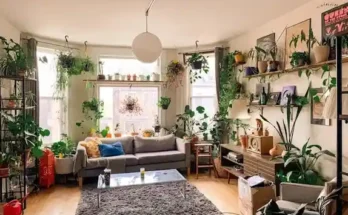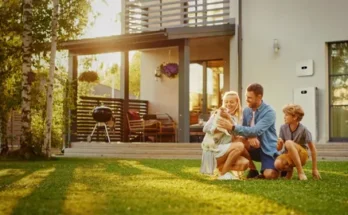There’s something quietly powerful about coming home at the end of a long day and feeling the atmosphere instantly shift. The weight of the outside world seems to lift the moment you step through your front door—into a space that’s more than walls and windows. It’s yours. It reflects who you are, what you love, and how you live.
That’s the soul of home improvement. It’s not just about renovations or repairs. It’s about transformation. It’s about taking the ordinary and making it extraordinary. It’s about crafting comfort, breathing life into lifeless corners, and building beauty from the bones of a building. Home improvement, when done with intention, becomes a deeply personal art form—and one that evolves as we do.
The Evolution of What Home Means:
In the past, home was often seen as static—a place you lived in, not necessarily a place you interacted with. But modern living has completely reshaped our relationship with our homes. They’re no longer just shelters. They’re classrooms, offices, gyms, meditation spaces, and social hubs. As our needs shift, our homes must adapt.
This shift has made home improvement more essential than ever. Not just in terms of function, but in how it nurtures our mental and emotional well-being. A thoughtfully updated space doesn’t just serve a purpose—it inspires a mood. And in today’s world, creating places that feel safe, beautiful, and uniquely ours is not a luxury—it’s a necessity.
-
The Kitchen
There’s a reason people always seem to gather in the kitchen. It’s the heart of the home, the background to our busiest mornings and our most heartfelt conversations. So, when thinking about improvement, this space deserves more than just a cosmetic refresh—it calls for soul.
Start by thinking about how you truly use the space. Do you cook often? Entertain guests? Sip coffee at sunrise? The answers should shape everything from layout to lighting. A kitchen island can go from being a prep zone to a homework station. Open shelving can display not just dishes but pieces of personality—ceramics from a local market or vintage jars from a family trip.
Lighting, in particular, can make a world of difference. Natural light should be maximized, and artificial lighting should be layered to suit different times and moods. Even something as simple as replacing dull bulbs with warm tones or adding a dimmer switch can transform the energy of the space.
-
The Living Room
If the kitchen is the heart, then the living room is the face of the home. It’s often the first space guests see and where most family life unfolds. Yet many living rooms fall into the trap of default design—matching furniture sets, beige palettes, and generic artwork. The real magic happens when you let the room reflect who you are.
Think of your living room as a canvas. Every piece—whether it’s a couch, a lamp, or a stack of books—should add color to your story. Don’t be afraid to mix eras, styles, and textures. An antique trunk can live beautifully next to a sleek, modern sofa. A worn leather chair tells a story, especially when paired with a bold rug or an abstract painting.
Paint is one of the simplest and most transformative tools at your disposal. A deep navy or forest green can bring intimacy and drama, while soft whites and taupes open up the room with quiet elegance. And don’t underestimate the power of scent—candles, diffusers, or fresh flowers can subtly elevate the whole experience.
-
The Bedroom
In a world that often feels chaotic, the bedroom should offer peace. It should feel like a refuge, a place where the mind can quiet and the body can rest. That means crafting a space that’s not just pretty—but purposeful.
Start by decluttering. A calm room begins with clarity, and physical clutter often contributes to mental noise. Choose storage solutions that are both beautiful and practical, like under-bed drawers or woven baskets.
Bedding is another area worth investing in. Luxurious sheets, a soft duvet, and layers of texture—from throws to cushions—create an inviting retreat. Wall colors should soothe, not stimulate. Think soft greys, blues, or blushes. And don’t overlook sound and temperature—blackout curtains, white noise machines, and smart thermostats can significantly enhance your quality of rest.
-
The Bathroom
The bathroom might be one of the smallest rooms in the house, but it holds immense potential. Improving it doesn’t necessarily mean a full renovation. It’s about creating a space that elevates your daily rituals.
Start by upgrading what you interact with most—faucets, showerheads, mirrors. These small details can change the entire feel of the room. Swapping out a standard mirror for a round, backlit version instantly adds a modern, spa-like vibe. Adding a rainfall showerhead or a freestanding tub can turn a five-minute rinse into a moment of daily indulgence.
Don’t be afraid to bring in warmth through texture—wooden accents, woven hampers, or even a small stool beside the bath. And if space allows, add a touch of greenery. Even a single plant can soften hard lines and introduce a breath of nature.
-
Outdoors
Home improvement isn’t confined to your interior walls. Outdoor spaces—patios, balconies, gardens—are extensions of your living area, and they offer untapped potential for relaxation, entertainment, and reconnection with nature.
Think of your outdoor space as another room. Create distinct zones—a dining area, a lounge area, a corner for gardening or quiet reflection. Lighting again plays a crucial role. String lights or lanterns create atmosphere, while pathway lights add both beauty and safety.
Even in small spaces, creativity thrives. A vertical garden, a bistro table set, or a colorful rug can inject life and personality. Adding an element of fire, like a chiminea or firepit, invites year-round enjoyment. There’s something primal and comforting about gathering around flames with loved ones.
The Emotional Blueprint of Home:
Ultimately, the most profound home improvements are the ones that speak to the heart. They’re not necessarily about budget or square footage but about intention. When you stop thinking of your home as a project and start thinking of it as a partner in your life, everything changes.
A fresh coat of paint can lift a mood. A reorganized closet can save hours of stress. A cozy reading nook can encourage quiet moments of self-care. Each improvement is a whisper of encouragement, a reminder that you deserve to live in a space that supports your dreams.
Conclusion:
Improving your home isn’t about perfection—it’s about expression. It’s not about keeping up with trends but about tuning into what feels right for you. It’s a process, an ongoing dialogue between who you are and where you live. And in that process, there’s joy, discovery, and endless creativity.
So, whether you start with a single room or dive headfirst into a full transformation, let your journey be guided not by Pinterest boards alone but by the deep knowing of what makes you feel at home. Because at the end of the day, a house is just a structure. But a haven—that’s something you create with intention, love, and a little imagination.




